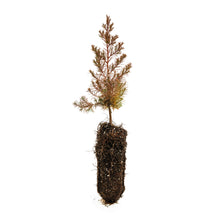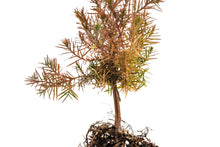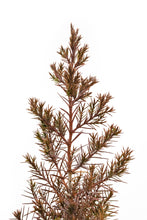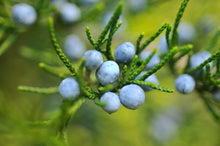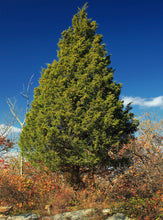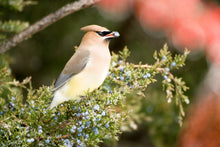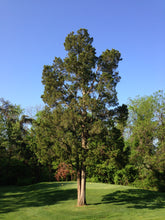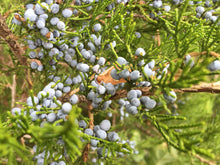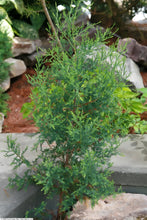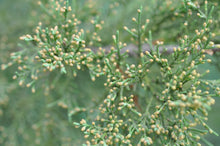
Juniperus virginiana
-
A hardy pioneer species and favorite of the Cedar Waxwing
- 100% guaranteed
- Seed-grown on California's Redwood Coast
- Transplanting and care instructions included
 |
Moisture Medium |
 |
Cold Hardiness -40°F |
 |
Light Full Sun |
 |
Size 20 – 70' tall / 8 – 20' spread |
 |
Lifespan 850 yrs |
 |
Growth Rate Medium |
 |
Drought Tolerance High |
 |
Wind Resistance High |
About Eastern Redcedar
Eastern Redcedar, Juniperus virginiana, isn’t really a cedar at all, but a small- to medium-sized juniper tree native to eastern North America, from southeastern Canada to the Gulf of Mexico. Other common names include Eastern Juniper, Red Juniper, and Aromatic Cedar. An especially common species in the Great Plains region of the United States, Eastern Redcedar is often found growing alongside roadways and fences, and scattered across open fields.
Growing to heights between 20 – 70 feet, with trunk diameters reaching 1 – 3 feet across, this is typically an upright, symmetrical, and neatly conical evergreen tree — in the Missouri, Oklahoma and Arkansas Ozarks, Eastern Redcedar is even used as a Christmas Tree species. Foliage appears in two distinctive forms: new growth is needle-like and spiky, while older, scale-like leaves press tightly against the twig. Cones, which can grow up to 0.25 inches-long, closely resemble berry-like fruit: globose, small, and dark purple-blue with a waxy sheen. They are a favorite of the Cedar Waxwing, and support a host of other wildlife, including wild turkeys, bears, rabbits, foxes, coyotes, and deer. Bark is reddish-brown and fibrous, exfoliating in narrow strips.
The wood of Eastern Redcedar has traditionally been used in fence building for its rot resistance, and in the construction of chests and closets for its fragrance and moth-repellent qualities. Native Americans once used the wood to mark out hunting territories. The city of Baton Rouge, Louisiana (which literally means “red stick”), was so-named by the French for these red-colored marker-poles.
A particularly hardy pioneer species, Eastern Redcedar thrives under adverse conditions — both drought tolerant and cold tolerant, growing equally well in dry, acidic, rocky, sandy, and clay substrates — so much so that during the Dust Bowl drought of the 1930s, the Prairie States Forest Project encouraged farmers to plant wind breaks made of Eastern Redcedar.
About Jonsteen's Seedlings
All of our trees are seed-grown at our nursery on California's Redwood Coast, which is inspected monthly and licensed by the California Department of Agriculture. Trees can provide a natural barrier against high winds, temperatures, noise pollution and soil erosion, all while benefiting local air quality, wildlife and property values — a Jonsteen seedling will only grow in value and beauty!
About Jonsteen's 100% Guarantee
All of our trees are guaranteed to arrive healthy and in good condition. If your tree perishes despite your honest efforts, we will be happy to replace it with a small-sized seedling for just the cost of shipping/handling. You can learn more about our guarantee and tree replacement policy here.
Seedling Size Chart: Medium
Due to the dynamic nature of actively growing trees, as well as the tremendous variation between species’ growth rates, we rely on the cubic volume of a seedling’s root mass to determine its “size” (Small / Medium / Large / XL). Within each size there is minor variance — the dimensions provided here represent the category minimum. If exact measurements are essential, please contact us about current stock.












